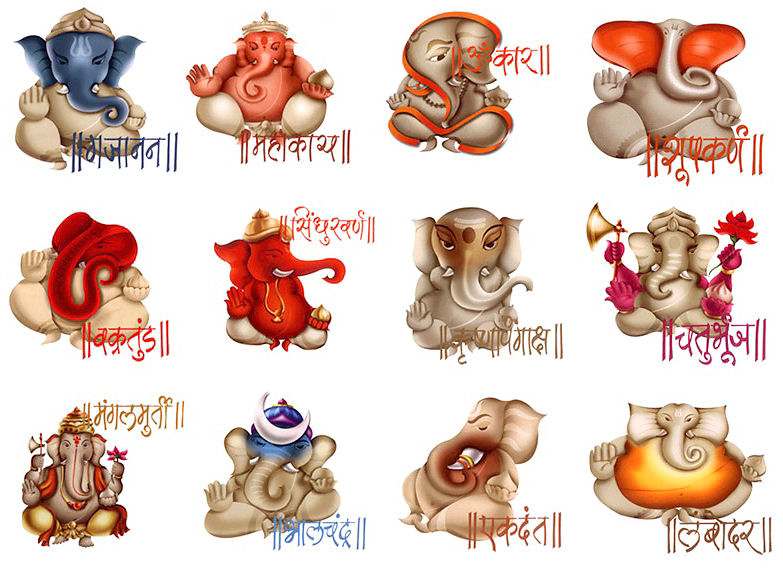Number Jyotirlinga Image State Location Description
1) Somnath
Gujarat
Prabhas Patan, Saurashtra
Somnath, destroyed and re-built six times, is held in reverence throughout India and is rich in legend, tradition, and history. It is located at Prabhas Patan in Saurashtra in Gujarat.
2) Mallikārjuna
Andhra Pradesh
Kurnool
Mallikārjuna, also called Śrīśaila, is located on a mountain on the river Krishna.[1] Srisailam, near Kurnool in Andhra Pradesh enshrines Mallikarjuna in an ancient temple that is architecturally and sculpturally rich. Adi Shankara composed his Sivananda Lahiri here.[citation needed]
3) Mahakaleshwar
Madhya Pradesh
Mahakal, Ujjain
Mahakal, Ujjain (or Avanti) in Madhya Pradesh is home to the Mahakaleshwar Jyotirlinga temple. The Lingam at Mahakal is believed to be Swayambhu, the only one of the 12 Jyotirlingams to be so. It is also the only one facing south and also the temple to have a Shree Yantra perched upside down at the ceiling of the Garbhagriha (where the Shiv Lingam sits).
4) Omkareshwar
Madhya Pradesh
Island in the Narmada River
Omkareshwar in Madhya Pradesh on an island in the Narmada River is home to a Jyotirlinga shrine and the Mamaleshwar temple.
5) Kedarnath
Uttarakhand
Kedarnath
Kedarnath in Uttarakhand is the northernmost of the Jyotirlingas. Kedarnath, nestled in the snow-clad Himalayas, is an ancient shrine, rich in legend and tradition. It is accessible only by foot, and only for six months a year.
6) Bhimashankar
Maharastra
Bhimashankar
Bhimashankar is very much debated. There is a Bhimashankara temple near Pune in Maharastra, which was referred to as Daakini country, Kashipur was also referred to as Daakini country in ancient days. A Bhimashkar Temple is also present there which is also known as Shree Moteshwar Mahadev. Another Bhimashankar is in the Sahyadri range of Maharashtra. Bhimshankar temple near Guwahati, Assam is the jyotirlinga according to Sivapuran. According to "LINGA PURAN", Bhimasankar temple in Bhimpur near Gunupur of Rayagada Dist in South Orissa is also debated as one of the Jyotirling, which is situated at the western part of the holy Mahendragiri mountains and at the river bank of Mahendratanaya(which is also believed as the Daakini area by many historian), was excavated in the year 1974, having quadrangular Shakti around the Linga and decorated by a Upavita as per the puran.
7) Kashi Vishwanath
Uttar Pradesh
Varanasi
Kashi Vishwanath Temple in Varanasi, Uttar Pradesh is home to the Vishwanath Jyotirlinga shrine, which is perhaps the most sacred of Hindu shrines.
8) Trimbakeshwar
Maharashtra
Trimbakeshwar, Near Nashik
Trimbakeshwar Temple, near Nasik in Maharashtra, is a Jyotirlinga shrine associated with the origin of the Godavari river.
9) Vaidyanath
Jharkhand
Deoghar district
Vaidyanath jyotirlinga temple also called Baidyanth Temple is in the Santhal Parganas division of the state of Jharkhand. It is the only place in India where the jyotirlinga and the saktipeeth are together. They lay side by side. Baijnath Shivdham in Kangara Himachal Pradesh also claimed as Jyotirlinga of Vaidyanath also associated with Ravana.
10) Nageshvara
Gujarat
Daruka Vana, Dwarka
Nageshvara Jyotirlinga shrine in Daruka Vana. The location of this jyotirlinga is in dispute with Dwarka in Gujarat and Aundha Nagnath in Hingoli district of Maharashtra claiming to be the correct location. Jageshwar is a place in Almora, Uttarakhand, where there is a temple called Jageshwar also claims to be Nageswar Jyotirlinga.
11) Ramalingeswarar
Tamil Nadu
Rameswaram
Rameswaram in Tamil Nadu is home to the vast Ramalingeswarar Jyotirlinga temple and is revered as the southernmost of the twelve Jyotirlinga shrines of India. It enshrines the Rameśvara ("Lord of Rama") pillar.[2]
12) Grishneshwar
Maharashtra
Near Ellora, Aurangabad district
Grishneshwar Jyotirlinga shrine, in Aurangabad district, Maharashtra, is located near the rock-cut temples of Ellora. This shrine is also known as Ghushmeshwar.




















